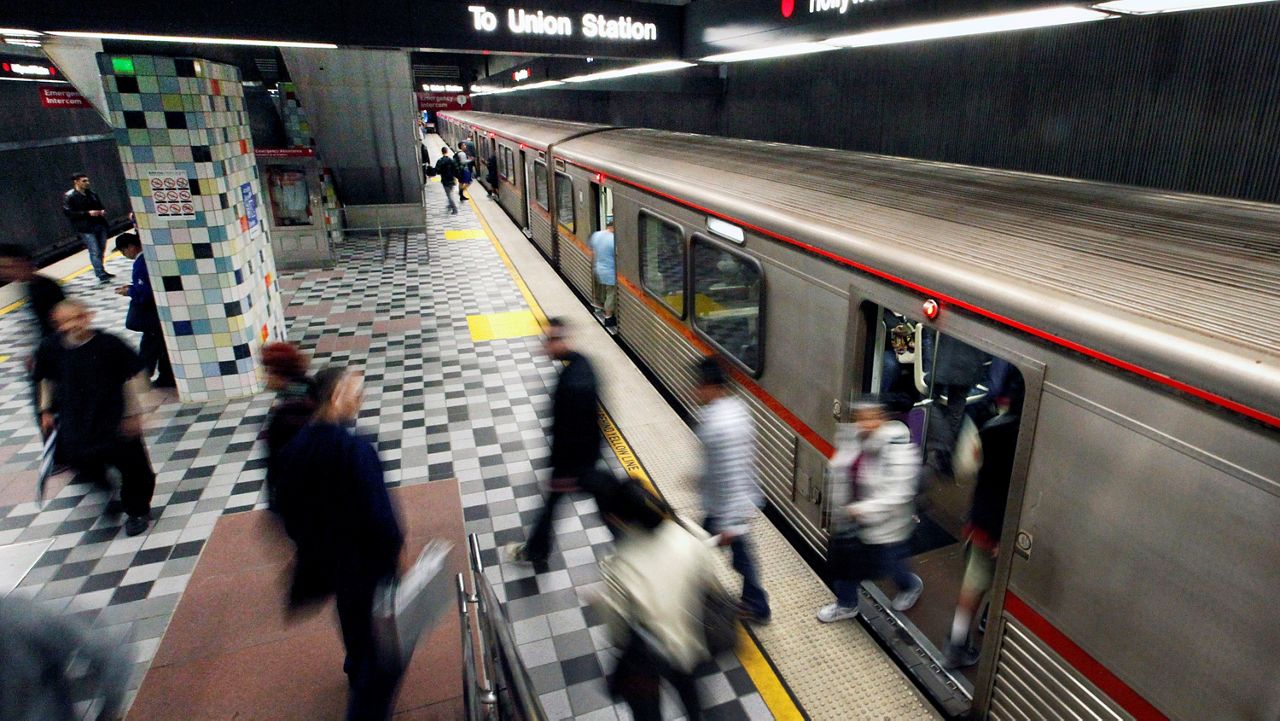LOS ANGELES (CNS) — Ridership across Metro's transportation system rose by 10% in September 2023 compared to the same month last year, the agency announced Thursday.
Related Stories
- The agency attributed the increase to its efforts to improve public safety and a surge in back-to-school riders
- Average weekend ridership is at 91% of pre-pandemic (September 2019) levels, and average weekday ridership sits at 77%
- Metro also noted that September marked the third full month of operation for the newly reconfigured A and E lines, as a result of the Regional Connector project
- Additionally, Metro reported bus ridership saw an 11% year-over-year increase
The agency attributed the increase to its efforts to improve public safety and a surge in back-to-school riders.
Metro reported more than 24.5 billion boardings in September 2023, signifying the 10th consecutive month of year-over-year ridership growth. According to the agency, monthly bus and rail ridership is at nearly 80% of its 2019 pre-pandemic levels.
Average weekend ridership is at 91% of pre-pandemic (September 2019) levels, and average weekday ridership sits at 77%.
The agency cited its focus on safety, and the resulting 53% decrease in crime across its system since April, as a driving factor for increased ridership, along with improved reliability and frequency of service.
In September, Metro had 24,671,730 boardings on its bus and rail systems. An average of 938,167 riders were taken each weekday, the first time since February 2020 that weekday ridership surpassed 900,000 boardings.
Saturday boardings averaged 637,957 and Sunday boardings averaged 543,721. Post-pandemic ridership recovery continues to be strongest on the weekends, with average boardings on Saturdays reaching 86% of its pre-pandemic levels and average boardings on Sundays reaching 92% of its pre-pandemic levels.
Metro also noted that September marked the third full month of operation for the newly reconfigured A and E lines, as a result of the Regional Connector project. The Regional Connector consolidated three of Metro's legacy rail lines — A (Blue), E (Expo) and L (Gold) lines, into two: the A Line, serving customers from Azusa to Long Beach; and the E Line, serving customers from East LA to Santa Monica.
The project also opened three new stations in downtown LA.
During the month of September, ridership on the A and E lines was 23% higher than the combined ridership on the A, E and L lines on weekdays compared to September 2022, according to Metro.
Ridership on the weekends for the A and E lines rose by 33% in September 2023 as well, compared to ridership for the A, E and L lines in September 2022.
Additionally, Metro reported bus ridership saw an 11% year-over-year increase. More than 19.5 million rides were taken on Metro buses, with total bus ridership in September 2023 at 81% of its pre-pandemic levels.
Average weekday bus ridership increased by 50,000 riders in September 2023 over August, with data showing more than 750,000 average weekday ridership.
The agency highlighted its GoPass pilot program, now in its third year, as another factor for an increase in September ridership. The program offers free transit passes to K-12 and community college students in participating schools.
More than 1.6 million student boardings were reported in September, a 23% year-over-year increase over September 2022, which saw 1.3 million boardings.
GoPass boardings in September rose by 103% compared to August GoPass boardings, which saw 801,163 student boardings.
Metro reported about 1,458,992 student bus boardings and 164,806 student rail boardings in September.
To date, about 345,907 students from 1,537 participating schools — in 110 school districts — are registered with GoPass.
Since the launch of the program in October 2021, there have been more than 25 million boardings by students using the program, according to Metro.
The agency also provides accessible and affordable transit through its pass program Low-Income Fare is Easy. The LIFE program helps qualifying LA County residents save money by providing free rides or "deeply" discounted fares on some of the agency's transit systems.



